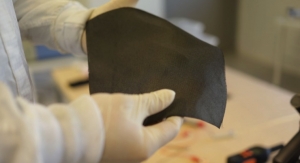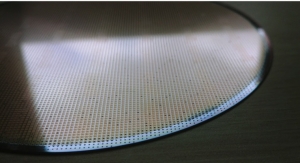The dawn of the smartphone transformed the face of personal electronics. Since then, consumers worldwide have endlessly wondered what – and when – the next big innovation in smartphone technology will be.
In recent years, materials science has proven to be paramount in the development of next-generation phones.
New types of high-tech glass, for instance, ushered in a wave of phones with curved and foldable screens.
Similarly, ceramics-based materials like piezoceramics are now being used to make super-small phone speakers, and they have much better sound quality than the ones on the market just a couple of years ago.
Given that graphene is a million times thinner than a human hair, harder than a diamond and more electrically conductive than copper, it is in an excellent position to be investigated and exploited by scientists developing new smartphone technologies.
The time is ripe for graphene to enter the fray, and the Graphene Flagship aims to lead the charge.
Graphene could make the phones of the future even faster. Using graphene-based photonics, the Graphene Flagship's 5G Spearhead Project developed a method to transmit data at speeds of up to 56 gigabits per second – significantly faster than a wired Ethernet connection.
This new data connection is faster, consumes less energy and results in fewer transmission errors than current 4G wireless connections. A graphene-enhanced phone has the potential to use the full bandwidth of the 5G network, which is up to five times faster than 4G.
Also in the realm of data transfer, the Graphene Flagship's radio frequency identification (RFID) Spearhead Project has created a platform to produce printed RFID sensors.
RFID sensors are commonly used in shops, hospitals and educational institutions, and their main function is to sense light, humidity or physical strain and communicate this data to a reader or a phone via near-field communication (NFC).
The printable graphene-based RFID sensors are poised to be low-cost and easy to use, although due to the limited quality and performance of today's printed components, these benefits have yet to be fully realized.
But RFID sensors printed from graphene could be the solution, unlocking the potential for further innovations in wearable electronics.
Consumer demand for more advanced smartphones is ever on the rise. But could graphene take phone technology to the next level? All signs point to graphene being a promising contender on many fronts.
Firstly, graphene's electronic properties make it ideal for faster, more reliable internal components.
Graphene is strong and highly conductive, but also extremely thin – just one atom thick – so it could lead to smaller but faster microprocessors for smart objects and the Internet of Things.
Furthermore, graphene and layered materials are flexible, meaning graphene could potentially be incorporated into foldable or curved screens. Graphene-based screens could even be pressure-sensitive, meaning smartphone screens could respond differently to hard and soft taps.
Graphene could also improve the capacity, efficiency and stability of phone batteries. For instance, the Graphene Flagship's lithium–oxygen-based rechargeable battery has energy densities up to ten times higher than conventional lithium-ion batteries with over 90% efficiency, and it can be recharged over 2,000 times.
Graphene and layered materials could also enhance the properties of other energy storage solutions, like supercapacitors.
Graphene and layered materials are also a good candidate for next-generation headphones and speakers, and graphene-based earphones are already on the market.
This is because graphene is flexible but strong, meaning a speaker made from a graphene-based membrane would experience fewer unwanted vibrations, resulting in less noise and clearer sound.
Finally, mixed with resins and plastics, or even just as a coating, graphene can already be used to make safer helmets, stronger and lighter airplane parts and more resistant construction materials. Incorporating graphene into phone casing could make it much more robust, so we may never need to worry about dropping our phones ever again.




























